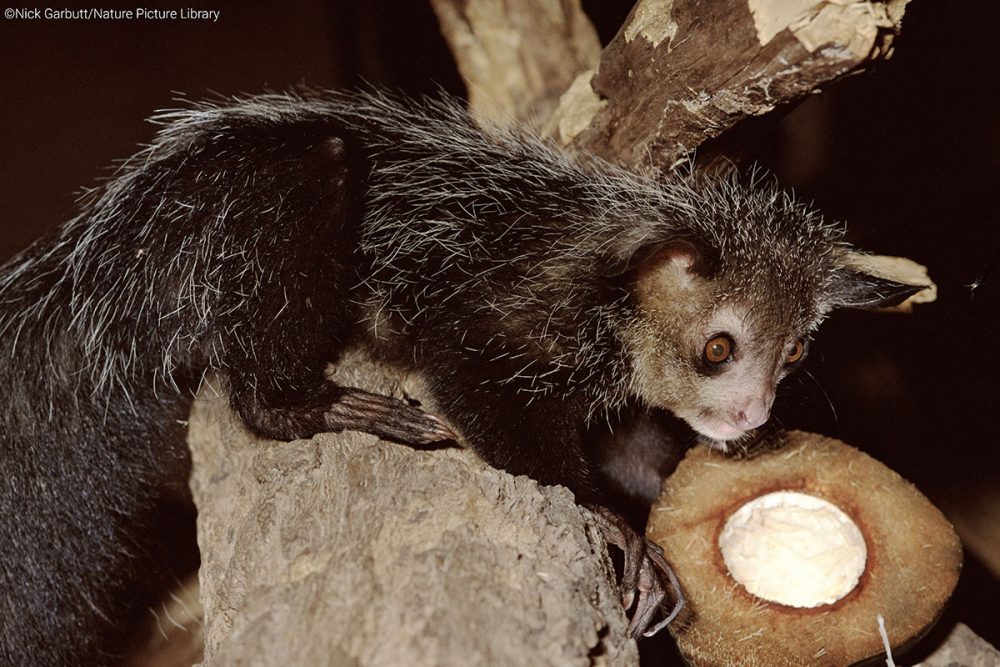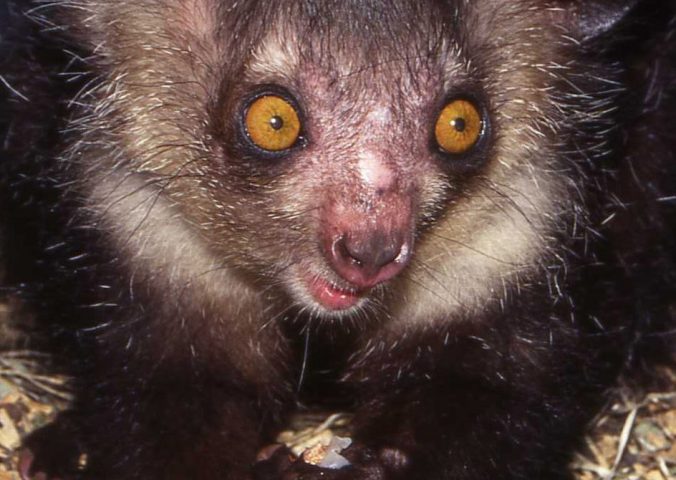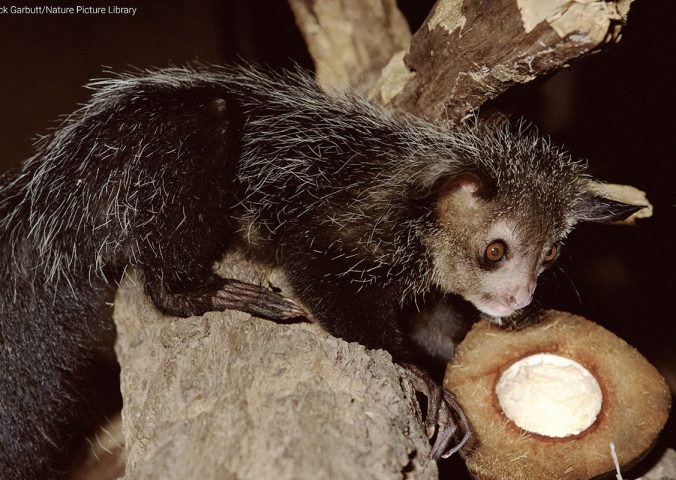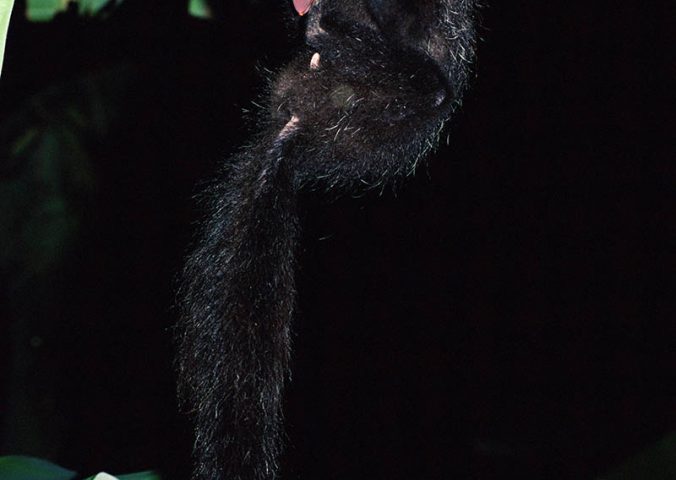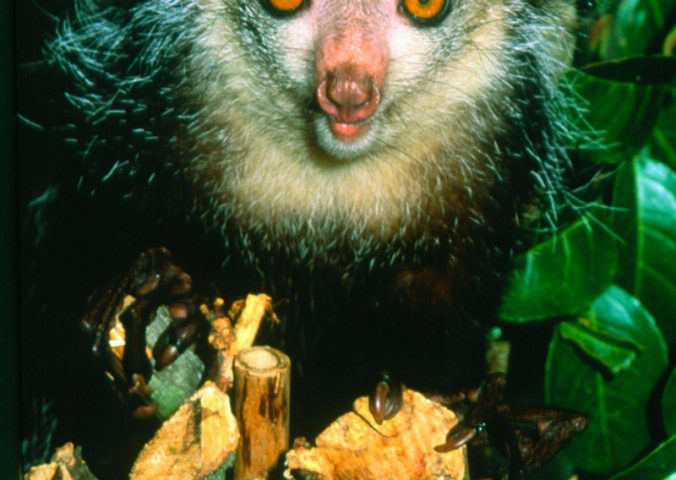About
The highly distinctive aye-aye is the world’s largest nocturnal primate.
It has a number of extreme morphological adaptations to its unusual feeding habits, making it one of the most bizzare-looking animals on the planet. Its odd appearance is one of the reasons it may be under additional stress; local superstitions regard it as an evil omen in many areas and is killed on sight. Like all lemurs, it is still at risk from the destruction of its forest home for agriculture and development. The species is sometimes referred to as Madagascar’s answer to the woodpecker. They can locate grubs living in cavities under tree-bark by tapping their skeletally thin middle fingers on the branch and listening to the reverberations through the wood. Once a promising cavity has been found the aye-aye cocks forward its large ears and listens for the sound of grubs burrowing beneath the bark. If a grub is heard the aye-aye will rip open the cavity with its teeth and hook out the grub with its incredibly dextrous fourth finger. This finger has its own ball and socket joint, which helped it ‘fish out’ the grubs.
- Order: Primates
- Family: Daubentoniidae
- Population: Unknown
- Trend: decreasing
- Size: 36-44cm
- Weight: 2-3kg
EDGE Score
Distribution
Endemic to Madagascar, occurring at low densities throughout the eastern rainforest belt as well as in the dry forests of the northwest and west of the island.
Habitat and Ecology
They are found in a variety of habitats including primary and secondary rainforest, deciduous forest, dry scrub forest, and cultivated areas. They are nocturnal, spending their days sleeping in an elaborate nest of intertwined twigs and dead leaves. They feed on grubs under layers of bark, as well as fruits, nuts, nectar, seeds and fungi. Their sharp teeth and long middle finger help them uncover and ‘fish out grubs’, and also extract flesh from hard fruits such as coconuts and ramy nuts.
